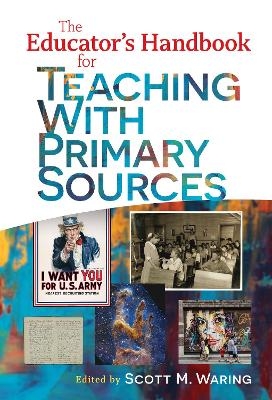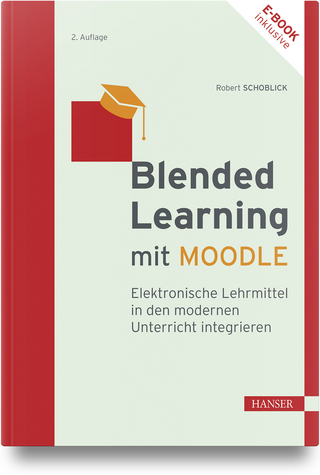
The Educator's Handbook for Teaching With Primary Sources
Teachers' College Press (Verlag)
978-0-8077-6909-6 (ISBN)
Educators across subject areas are striving to integrate primary sources into their pedagogy and teaching. Yet, despite their importance to authentic disciplined inquiry, the implementation of primary source activities in the pre-K–12 classroom has been limited. This lack of utilization can largely be attributed to the perception that these activities are too complex to design, implement, and grade. Many teachers also feel that primary source analysis and the construction of evidence-based narratives are too difficult for students to complete in the traditional classroom. Waring argues that this is not the case and, with this handbook, provides teacher candidates and inservice teachers with detailed and specific perspectives, activities, approaches, and resources to help them effectively and authentically use primary sources in their classrooms.
Book Features:
Introduces teaching with primary sources, including detailed examples of authentic and tested instructional ideas and approaches.
Designed to meet the needs of classroom teachers and teacher candidates in social studies, English and language arts, mathematics, science, and other fields.
Offers dozens of primary sources and links to resources throughout the book.
Aligns to national standards, frameworks, and the C3 framework for social studies.
Can be used to meet the needs of emerging English learners and students with special needs.
Focuses on ways in which educators are utilizing a variety of emerging technologies to engage students in deeper and more authentic ways of learning.
Scott M. Waring is a professor and program coordinator for the Social Science Education Program at the University of Central Florida. His books include Integrating Primary and Secondary Sources Into Teaching: The SOURCES Framework for Authentic Investigation and Conducting Authentic Historical Inquiry: Engaging Learners with SOURCES and Emerging Technologies.
Contents
Part I: Introduction to and Strategies for Teaching With Primary Sources
1. Making the Invisible Visible: Demystifying Sources and Disciplinary Practice 3
Heather M. Nice
2. A Culture of Questioning: How to Use Student Questions to Springboard Powerful Primary Source Learning 19
Sarah Westbrook and Johnny Walker
3. More Than Words: Strategies for Close Reading With Primary Sources 31
Melissa Starkey
4. In Their Hands, Hearts, and Minds: Strategies for Helping Students Touch, Inquire, and Think Deeply Using Primary Sources 47
Michael M. Yell and Geoffrey Scheurman
5. Building Into Inquiry: Trade Books and Primary Sources to Drive Inquiry-Based Learning 57
Allie Whitford and Melanie McCormick
Part II: Developing an Environment for Conducting Authentic Inquiries With Primary Sources
6. Learning About Children’s Lives at the Turn of the Century Through Visual Discovery and SOURCES 69
Scott M. Waring
7. Inquiry by Design: Unit Planning to Ensure Authentic Use of Primary Sources 85
Stefanie Rosenberg Wager
Part III: Applying Disciplinary Tools and Concepts, Evaluating Sources, and Using Evidence in the Creation of Evidence-Based Narratives
8. Pairing Primary Sources With Literature to Improve Critical Reading and Comprehension 101
Salika A. Lawrence, Nancy Osborn, Marie Donnantuono, and Tiffany Labissiere
9. Curating Curiosity: Building and Implementing Engaging Inquiries in K–12 Social Studies Classrooms 117
Alicen C. Brown, Michael P. Gurlea, and Michelle L. Hock
10. What Does “Primary Source” Mean in Science Education? 131
Loris Chen, Kathy Biernat, Donna Governor, and Eric J. Pyle
11. Using Arts-Based Primary Sources to Connect Students’ Lives to Learning 141
Catherine Cooney and Erin Elman
12. Using Primary Sources in the Pre-K–12 Mathematics and Statistics Classrooms: A Matter of Equity 157
Peter DeCraene, Christine Franklin, Lateefah Id-Deen, and Trena L. Wilkerson
13. Teaching Economics Using Primary Sources 175
Stephen Day, Genevieve Podleski, Scott Wolla, and Diego Mendez-Carbajo
Part IV: Emerging Technologies and Primary Sources
14. Engaging Students With Emerging Technologies 191
Scott M. Waring and Richard Hartshorne
15. My Place in History: An Artifact-Based Virtual Tour 209
William Toledo and Esther A. Enright
16. Using Emerging Technologies to Deepen Instruction With Historical Artifacts 217
Grant R. Miller, Peter M. Nelson, and Scott W. Boatright
Index 229
About the Editor and Contributors 237
| Erscheinungsdatum | 02.11.2023 |
|---|---|
| Verlagsort | New York |
| Sprache | englisch |
| Maße | 222 x 286 mm |
| Gewicht | 508 g |
| Themenwelt | Schulbuch / Wörterbuch ► Unterrichtsvorbereitung ► Unterrichts-Handreichungen |
| Sozialwissenschaften ► Pädagogik | |
| ISBN-10 | 0-8077-6909-6 / 0807769096 |
| ISBN-13 | 978-0-8077-6909-6 / 9780807769096 |
| Zustand | Neuware |
| Haben Sie eine Frage zum Produkt? |
aus dem Bereich


